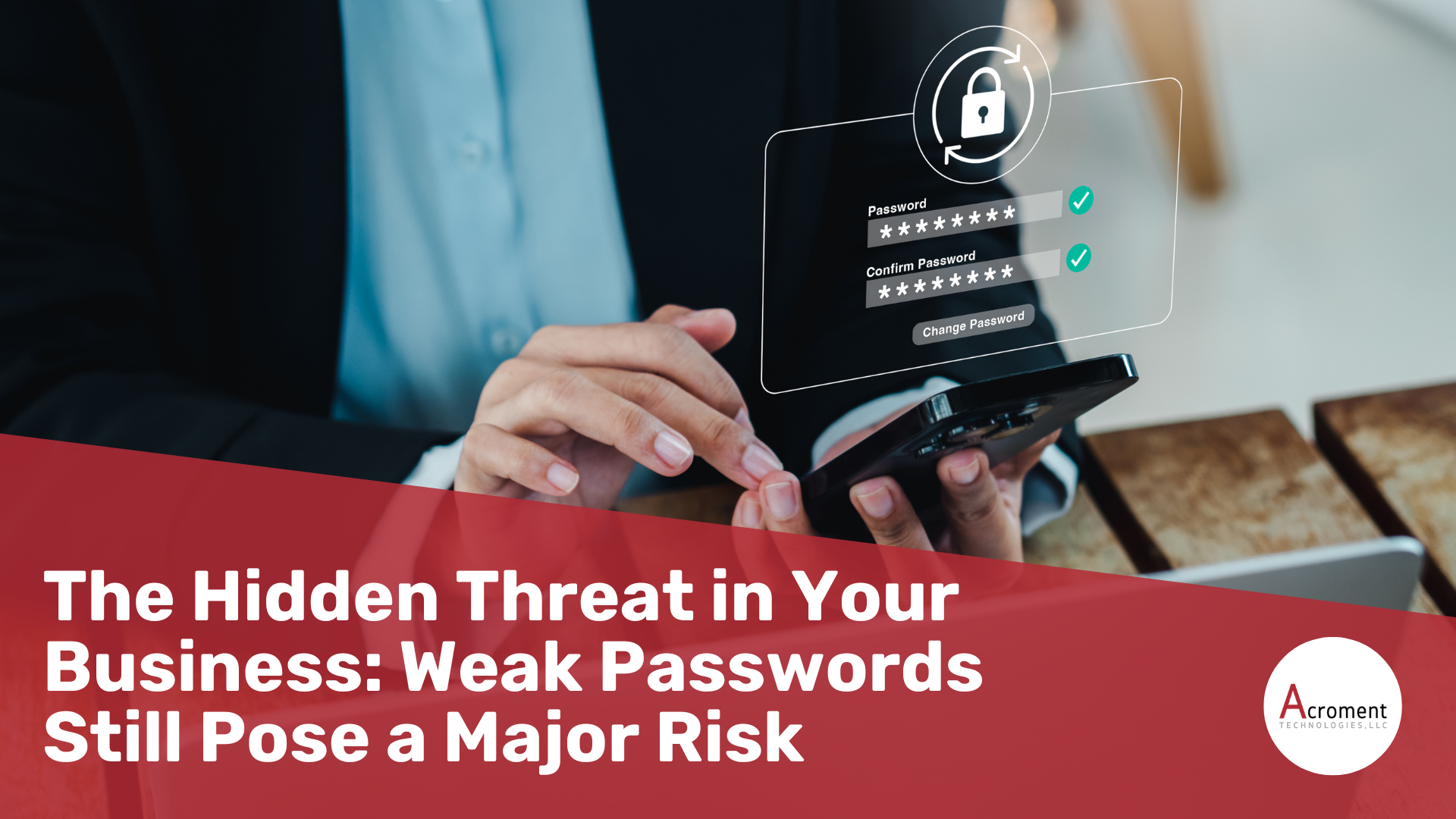Why Weak Passwords Are Still Costing Businesses
If you’re still using “password123” or “qwerty123,” it’s time for a wake-up call.
Despite years of cybersecurity education, weak passwords remain one of the most common—and dangerous—security vulnerabilities for businesses of all sizes. As an IT professional working in a local business, you might think your team is doing enough. But the data tells a different story.
And cybercriminals are counting on that.
What Makes a Password Weak—and Why That’s a Problem
Passwords like “123456,” your first name, or even “iloveyou” might seem harmless. But they’re shockingly easy to crack. Some of the most commonly used passwords can be guessed in less than a second by automated tools.
Even worse? These weak credentials are often shared across multiple platforms. So once a hacker breaks into one account, they can gain access to everything from your email to customer data—and that can be devastating for your business.
Why Local and Small Businesses Are Especially at Risk
You might think your company isn’t a target because it’s small or local. That’s exactly the kind of thinking cybercriminals love.
Small and midsize businesses (SMBs) often don’t have dedicated security teams or resources to bounce back after a breach. One compromised login could expose sensitive financial records, internal communication, or proprietary information.
No matter your size or industry, your business is a valuable target.
What You Can Do Right Now to Strengthen Security
Here’s the good news: fixing weak password practices doesn’t have to be complicated.
- Use strong, randomly generated passwords. These should include a mix of letters, numbers, and symbols—and avoid anything personal or predictable.
- Implement a password manager. These tools generate and store complex passwords so your team doesn’t need to remember (or write down) each one.
- Enable two-factor authentication (2FA). Adding a second layer of verification dramatically improves your defense—even if a password is compromised.
- Explore passwordless logins. Passkeys and biometric authentication are gaining traction as safer, simpler alternatives.
Don’t Wait for a Breach to Act
If your team is still using weak or recycled passwords, now is the time to make a change. A solid password policy can mean the difference between business as usual and a costly security incident.
Get Help from Acroment Technologies
At Acroment Technologies, we help local businesses take the guesswork out of cybersecurity. From reviewing your password policies to setting up secure authentication systems, our team is here to support yours.
Let’s make your business a harder target. Contact us today to get started.


